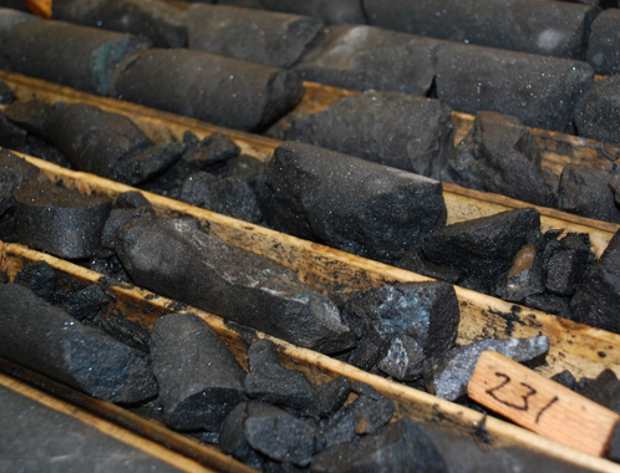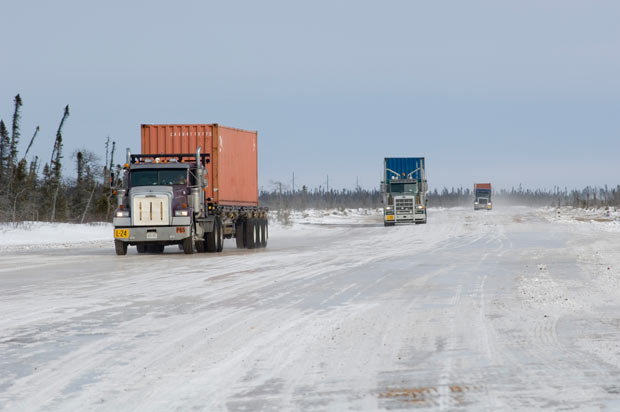
THUNDER BAY – Business – Mining is on the mind of Minister Tony Clement. The Treasury Board President was “The Ring of Fire represents a once-in-a-lifetime opportunity to create jobs, and generate growth and long-term prosperity for Northern Ontario and the nation,” said Minister Clement. “As Minister for FedNor, and as the federal Lead Minister on this initiative, I welcome the opportunity to work with all levels of government, as well as First Nations and industry stakeholders to prepare and implement the collaborative economic development approaches for the region.”
Minister Clement updates on Mining
Tony Clement, Minister for FedNor, today addressed a meeting of the Ontario Chamber of Commerce to underscore the economic development potential of the Ring of Fire and reaffirm the Harper Government’s commitment to the mining development.
Address from Minister Clement
I am pleased to have the opportunity to address the Ontario Chamber of Commerce today.
The important role your organization plays as an advocate for small business and entrepreneurship in this province is second to none.
It is clear that you understand the value of the small business sector to the economic success of our nation.
Let me assure you that the Harper Government shares your vision and determination that Ontario be a leading destination in the world to do business.
We appreciate your engagement with the upcoming budget and your targeted recommendations for spurring job creation, growth and investment in the province.
We also appreciate your recognition of the significance of the Ring of Fire to Ontario’s long-term prosperity.
Your call that there had to be a federal lead on this incredibly important development was timely and prescient. You recognized that there needed to be not only federal leadership, but a coordinated, whole of government approach to what is a promising yet very complex opportunity.
And our government agrees. The Prime Minister understood the need to bring renewed impetus to this development.
The promise and possibility of the Ring of Fire has been talked about for several years now. But the flames of excitement, quite honestly, had started to dampen and the Prime Minister realized it was time to add a little oxygen to the embers.
As you know, I have been named to lead a coordinated approach by the federal government on the Ring of Fire. And I am encouraged by the prospect of what this vast mineral-rich expanse holds in terms of Ontario’s future.
The Ring of Fire’s sheer size and scale has ignited the imagination of the business world and fuelled hope and excitement across Northern Ontario.
That’s because the Ring of Fire is no ordinary mining development. It’s not one mine. Rather it’s a 5,000 sq kilometer expanse with significant deposits of nickel, copper and chromite.
In fact, it holds the largest deposits of chromite, which is the main ingredient in stainless steel, in North America.
To date, there are 30,000 claims covering the area.
Some 30 companies, including Cliffs Natural Resources, Noront Resources, and KWG Resources, are actively exploring the region, spending close to $80-million to discover the riches that lie beneath.
And what they have found is impressive and leads us to believe that the Ring of Fire could be the biggest mining development Northern Ontario has ever seen.
And for anyone who is familiar with Northern Ontario’s impressive mining history, that is saying a lot.
The region is estimated to contain between $30 to $50 billion worth of minerals – enough to be mined for several decades.
In terms of jobs, that translates into potentially over 5,000 direct and indirect positions in Northern Ontario alone, plus significant spinoff benefits throughout the province.
As I said, this is no ordinary mine development.
It is a generational opportunity to materially improve the economic prospects and quality of life for thousands.
The sheer size of the Ring of Fire means that the ripple effect from the wealth it generates will be felt far beyond the Ring itself and even Ontario.
I know you, at the Ontario Chamber of Commerce, understand what is at stake.
It hasn’t been easy times of late for my home province and the province I have proudly served for years as a provincial MPP and now a federal cabinet minister.
The economic uncertainty that has gripped the global economy has not left Ontario unscathed. The province’s manufacturing might, the economic engine of Confederation, has had to adjust to tectonic shifts in trade and competition thanks to the rise of China and weakening US demand.
And yet, how lucky are we to discover this treasure trove of mineral riches in the James Bay Lowlands?
A find that could potentially equal, if not surpass, the wealth of the famed Sudbury Basin, which has been generating jobs and attracting investment for over a century.
But as the saying goes, anything worth having doesn’t come without effort.
And before we can move forward and realize that potential, there are some things we need to consider.
Like every region where mines have been developed in Ontario, across Canada and around the world, this part of Northern Ontario is unique.
Its marshy wetlands have been home to First Nations for thousands of years. And their communities and their experience are unique to them.
It is incumbent upon the mining industry and business in general to understand those circumstances, engage those communities and be able to appreciate their perspective.
This is a complex undertaking; there is no doubt about it.
But companies that engage communities early and persistently have been able to achieve great success both in terms of the social and economic benefits their projects have generated, and for their bottom line.
In fact I think many would be surprised to learn that mining is the largest employer of Aboriginal people in Canada.
There are some 200 types of economic partnerships between First Nations and mining companies across the country. About 90 of them are in Northern Ontario.
These partnerships, such as Impact and Benefit Agreements or IBAs, have included economic incentives, employment and education opportunities, and measures for local cultural and environmental protection.
IBAs have been negotiated for many important developments such as the Voisey’s Bay project in Newfoundland, where 54% of the workforce comes from local First Nations communities, and the Raglan Mine in Northern Quebec.
In the Northwest Territories, several diamond mines have translated into $500-million spent with aboriginal contractors and an incredible 50% reduction in Aboriginal recipients on social assistance.
At the same time, Aboriginal high school enrolment is up from 36% to 56% of the population.
Here in Ontario, Goldcorp’s Musselwhite mine, which is not far from the Ring of Fire, has been recognized for its success in generating local spin-off businesses.
At PDAC this year, the Skookum Jim Ward, which recognizes exceptional achievement in the Canadian mining industry, went to Windigo Catering Partnership, a venture owned by Windigo First Nations Council, which supplies the Goldcorp mine.
There is a framework for success and mutual benefit that I think we can follow to reach agreement and understanding on the development of the Ring of Fire.
Of course, in addition to our First Nation partners, there are many stakeholders to consider. There are also challenges to overcome, such as infrastructure and environmental considerations.
The Harper Government understands that. And I am here today to say that we will do our part to help move this development forward.
I will work in coordination with my colleagues at Aboriginal Affairs, at Infrastructure, at Natural Resources and at 12 other federal departments, to ensure we speak with a single voice.
This collaborative approach will ensure we maximize investments, avoid duplication and work efficiently with First Nation partners, industry and other stakeholders.
The federal government recognizes it must pull its weight. And business must do its part as well.
That means engaging early on with First Nations communities. It also means telling your story.
We know Cliffs Natural Resources Inc. says it expects to start production in 2017. And last year it announced its intention to locate a $1.8-billion ferrochrome refinery near Sudbury.
Noront Resources plans to develop a nickel mine by 2016, and KWG Resources is continuing exploration activities for nickel, copper and diamonds.
Both Cliffs and Noront have moved from exploration to the environmental assessment stage and have submitted project descriptions to the Canadian Environmental Assessment Agency.
But what we need to hear more of from the industry is why this matters.
Mining has been the foundation for much of Canada’s wealth. We are, in many ways, the country we are today thanks to mining.
You can draw a direct connection from remote mines in Labrador, Flin Flon Manitoba and Kirkland Lake Ontario to Toronto’s financial centre. All Canadians have a stake in a healthy domestic mining industry and that is a story the industry needs to share.
I, for my part, am committed refreshing and rejuvenating this effort. As the longest-serving Minister for FedNor, the Government of Canada’s economic development organization for Northern Ontario, I can see that the potential of this development for the region is unparalleled.
The good news is there some positive movement in the right direction. I’ve reached out to Michael Gravelle, the province’s newly named Minister for Northern Development and Mines.
And just recently, I met with representatives of the Matawa First Nations during a visit to Thunder Bay.
It was a very positive meeting. It was a first step, but I can assure you that I am fully committed to working closely with these communities in the coming months and years, reaffirming our Government’s commitment to collaborative and responsible resource
We can’t let this opportunity pass us by.
The Ring of Fire represents a once-in-a-lifetime opportunity to create jobs, and generate growth and long-term prosperity for Northern Ontario and the country.
We need to do this right. And we need to move forward now.
CREATING THE CONDITIONS FOR ECONOMIC GROWTH AND LONG-TERM PROSPERITY
Now before I finish, I would like to take a few minutes to also share with you what Our Government’s priorities are when it comes to supporting jobs, growth and long-term prosperity.
The Ring of Fire obviously fits those objectives very well, but we are also working hard to ensure Canada and Ontario is one of the best places in the world to do business
And one of the actions we’re taking, in fact one of the most important things government can do to support Canadian business, is to cut red tape.
In today’s competitive world, red tape is a burden Canadian companies simply can’t afford to carry.
That is why last October we unveiled our Red Tape Reduction Action Plan. The Plan is one of the most ambitious and far-reaching red tape cutting exercises in the world today.
But don’t take my word for it. The Canadian Federation of Independent Business calls our plan potentially “ground-breaking” and a “game-changer.”
The Plan, which is the result of year-long cross-country consultations with business, includes 90 reforms, spanning a host of departments.
It also includes half-a-dozen systemic reforms to the way government regulates.
In addition to the One-for-One Rule, which puts a permanent cap on the amount of regulation, we are introducing service standards and requiring departments to publish forward plans which alert businesses to potential changes to regulations over a 24-month period.
Cutting red tape is part of our Government’s push to ensure we are creating an environment that gives business the confidence to do what they do best: create jobs and economic growth.
That confidence comes from a few key areas:
- The regulatory environment
- Taxation levels
- The state of the economy
- And especially in this day and age, the country’s fiscal health.
As you well know, keeping taxes low is a priority for our Government.
We no longer have the rather unenviable title of having one of the highest marginal effective tax rates on business in the world.
In fact, in a few short years Canada has cracked the global Top 10 when it comes to corporate tax competitiveness according to a report by Price Waterhouse Coopers.
PWC looked at our tax rates – now the lowest among the G-7 – as well as the number of hours it takes business to fill out all the forms and actually pay those taxes.
And guess what? Canada went from 28th in the world in 2010 to 8th!
And taxation is not the only area in which Canada is outperforming.
Canadian economic growth has been more resilient than other G-7 economies, both during the recession and throughout the recovery.
Most striking, Canada has outperformed all other G-7 economies in job creation over the recovery.
Since July of 2009, the Canadian economy has created over 900,000 net new jobs.
And our Government’s objective is to balance the budget before the end of this Parliament, and to maintain its position of having the best fiscal record in the G-7.
Since the global financial crisis hit in 2008, our Economic Action Plan has balanced necessary stimulus with responsible reductions in spending.
Let me run through with you some of the measures we have taken:
- We froze the salaries of the Prime Minister, Ministers, MPs and Senators until 2013;
- We put a three-year cap on travel and hospitality costs throughout the public service and strengthened the rules around these activities; and
- We reduced ministerial office expenses significantly: they were down 11.6 per cent in 2011-12 compared to the previous fiscal year.
But we didn’t stop there.
We undertook a comprehensive strategic review, putting billions of dollars of direct program spending under the microscope.
By doing so, we identified a number of improvements and efficiencies in the way we spend taxpayers’ dollars – achieving significant on-going savings.
Add to that …our historic reform to the pensions of MPs and public servants that will save Canadian taxpayers $2.6 billion by 2017.
We’ve also put an end to voluntary severance pay for public servants that will save taxpayers $500 million a year.
Clearly, we are leaving no stone unturned in our effort to rein in government spending.
Taken together, it’s perhaps not surprising then that Canada is internationally recognized as one of the best places in the world to do business:
- Our fiscal situation is the envy of other nations;
- Our taxes are low;
- We continue to create jobs;
- And we’re cutting red tape.
For a few years now, Forbes magazine has ranked Canada among the best countries in the world in which to operate, thanks to our sound banking system, declining tax rates and yes – relative lack of red tape.
CONCLUSION
It’s a great position to be in — and we plan to stay in the front of the pack.
In Ottawa, we are working to make sure that federal policies – from fiscal to taxation and regulation to immigration – continue to create the conditions for businesses to succeed.
Because, ultimately, it is people like you with your businesses and aspirations that are the true engines of growth.
Our Government believes in Canadians and their abilities.
We understand that the more individuals like you are empowered to move ahead with your dreams, your energies and your investments, the more prosperous Canada will be.
So I look forward to continuing to work with you to keep our economy growing in the years ahead.
Thank you.






